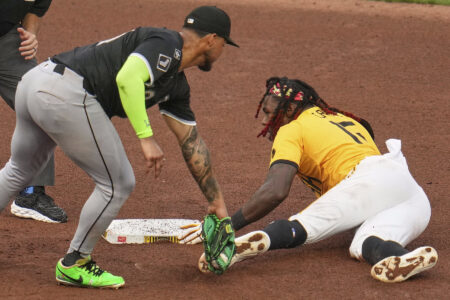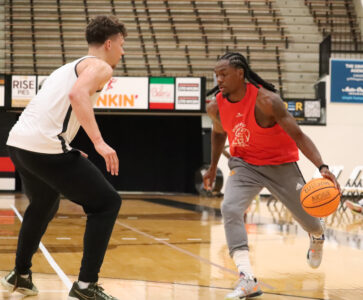Fish decide which lures work
Fishing is full of mysteries and riddles to be solved by anglers who pull from their experiences and the multitude of truisms that are passed down from generation to generation.
One of the so-called truths that many anglers take to the lakes is about lure size. I am among them. For years, I stocked my Plano boxes with lures that over the years had become standard equipment for bass anglers.
I went to the lakes with preconceived notions that for certain fish, I was going to throw lures of a certain size. I didn’t give much thought to whether bigger might be better or, for that matter, whether going mini might be mighty.
Fishing trips over the past several years have dashed many of my theories about lure size. Recently, I have added 2- and 3-inch Ned worms to the tackle I haul to the lake, as well as 3-inch Crush City Mooch Minnow baits, which I thread on one-eighth- and 3/16-ounce jigs.
You would think I would have learned my lesson about the effectiveness of undersized plastics for largemouth and smallmouth bass back in the early 1990s, when Ohio lure companies Hog Hunter and Venom marketed their Super Do baits. The Super Do is a 3-inch soft plastic worm body with a flared tail shredded to resemble tentacles.
Despite their diminutive size, Super Dos quickly became staples in many bass anglers’ arsenals. Next came tube baits, especially the 4-inch green pumpkin versions that worked great with jig heads inserted for Lake Erie smallies and rigged Texas-style for pitching into cover for largemouth bass.
Soon, however, beaver-tail creature baits including Reaction Innovations’ Sweet Beavers and Strike Kings’ Rodents caught my attention. To this day, I never leave the dock without my favorite colors in Sweet Beavers and similar flipping and pitching baits.
My recent investment in the Lowrance Eagle Eye 9 technology that includes forward-facing sonar has opened the door to the phenomenon of casting to fish I can see in front of the boat and watching them react to my lures. The 3-inch Mooch Minnow is a perfect tool for that kind of fishing.
Largemouths react aggressively when the jig minnow drops through their field of vision. It is little and creates very little vibration or disturbance in the water, but the bass swim to it and rarely hesitate to eat it.
What has been particularly interesting, however, is the way that crappies react to the same 3-inch lure. Earlier this week, I decided to target crappies and discovered 10- and 11-inch crappies could not resist the plastic jig minnow.
A friend joined me and we teamed up to boat 60 crappies, keeping a few for the skillet. The Mooch Minnow was so effective that it clearly outproduced even live bait that day.
I mentioned to several crappie experts about my experience, and they commented that the 3-inch plastic seemed pretty big compared to their typical offerings of tiny grub bodies on jigs tipped with maggots or minnows.
The lure, that some might guess is too small for bass and too big for crappies, has turned out to be the most effective lure on my boat in recent weeks. The stubby Ned worms might seem too small to catch the attention of smallmouth bass and walleyes in the Ohio River current seams, but the fish have shown a great appetite for the 2- and 3-inch baits.
I continue to be impressed that just when I think I have figured it out, I discover a twist. So think beyond the truisms. The fish do indeed have the final say about what lures are going to work best.
Jack Wollitz fishes throughout northeastern Ohio and western Pennsylvania to find stories to share with Tribune Chronicle and Vindicator readers. Contact him at jackbbaass@gmail.com.




